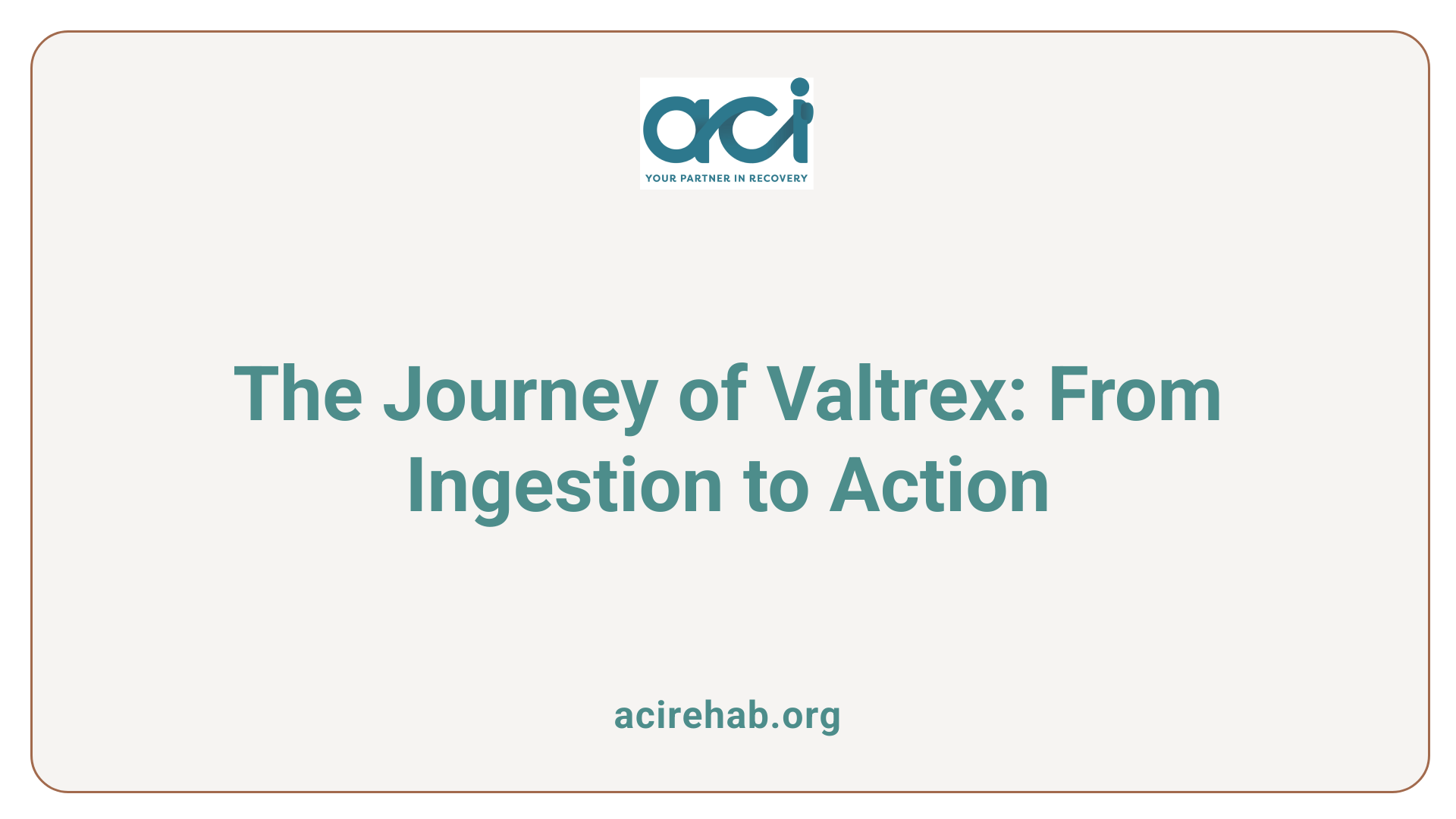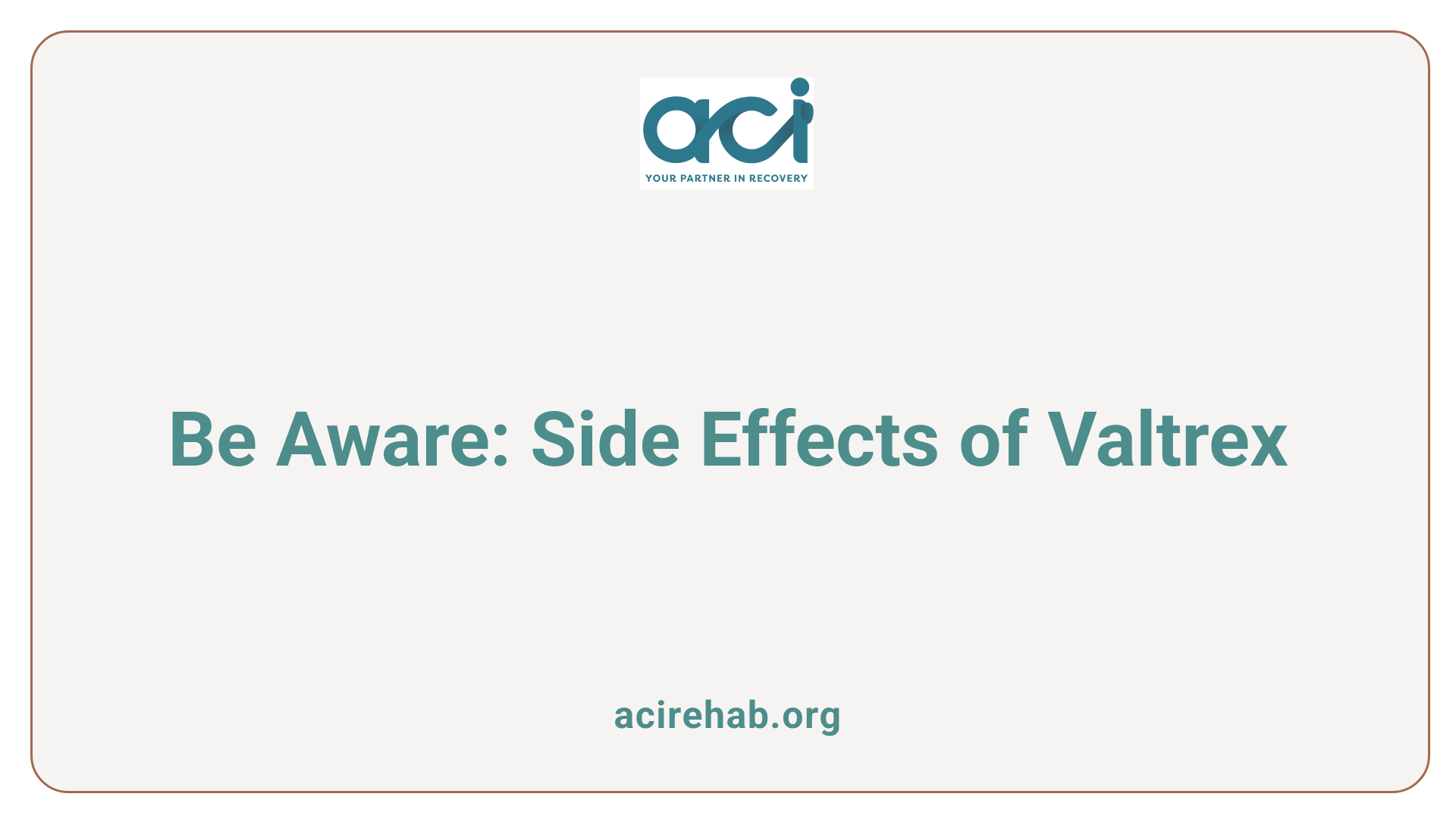Exploring Valtrex’s Presence in the System
Valtrex, known generically as valacyclovir, is a prescription antiviral medication commonly used to manage and treat infections caused by the herpes virus, including genital herpes, cold sores, and shingles. A crucial aspect for those on Valtrex is understanding how long it remains in the body, influencing both its effectiveness and the approach to managing any side effects. In this narrative, we will delve into the pharmacokinetics of Valtrex, its elimination process, and factors that affect how long it stays in the system.
How Valtrex Works Immediately After Intake
Absorption and Peak Concentration After Ingestion
Valtrex, or valacyclovir, is a prodrug that swiftly transforms into its active component, acyclovir, after oral ingestion. This process occurs rapidly as the medication is absorbed from the gastrointestinal tract. Most individuals can expect the peak concentration of acyclovir in their system within 1.5 to 2.5 hours.
This quick absorption means that Valtrex is positioned to begin its antiviral effects almost immediately. The bioavailability of valacyclovir is around 54.5%, indicating that more than half of the administered dose reaches systemic circulation, enhancing its effectiveness against herpes viruses.
Initial Effectiveness of Valtrex
The effectiveness of Valtrex in alleviating symptoms generally manifests within a couple of days after starting the medication. For optimal results, it is crucial to take Valtrex at the first sign of symptoms. Ideally, this should occur within 72 hours of symptom onset to significantly reduce pain, itching, and the healing time of sores.
Most users notice symptom improvement typically within two to three days, although individual response times may vary. Users may experience relief more quickly depending on factors such as age, overall health, and the severity of the outbreak. While Valtrex starts to work right away, it’s important to remember that a full course of treatment per physician recommendations is vital for maximizing its benefits and managing herpes infections effectively.
The Metabolic Pathway: From Valacyclovir to Acyclovir

Conversion process of valacyclovir
Valacyclovir, marketed as Valtrex, is a prodrug, meaning it requires metabolic conversion to become active. After oral administration, valacyclovir is rapidly absorbed from the gastrointestinal tract and is converted into acyclovir in the liver. This transformation is crucial, as acyclovir is the active compound responsible for the antiviral effects against herpes viruses.
When ingested, the conversion process makes acyclovir significantly more bioavailable, enhancing its effectiveness. The bioavailability of valacyclovir is noted to be approximately 54.5% ± 9.1% following a 1-gram dose. This means that just over half of the drug reaches systemic circulation, allowing it to act against viral infections such as genital herpes and shingles.
Bioavailability and absorption rates
The rapid absorption of valacyclovir contributes to reaching peak therapeutic concentrations in the body within one to three hours post-ingestion. When the medication is taken at the onset of symptoms, its effectiveness improves significantly. Understanding individual health factors like age, kidney function, and metabolic rate is essential in predicting how long acyclovir, derived from valacyclovir, will remain in the system.
The half-life of valacyclovir averages 2.5 to 3.3 hours in individuals with normal kidney function, indicating how long it remains effective before being cleared from the body. Additionally, approximately 46% of valacyclovir is excreted through urine within 96 hours, emphasizing the role of renal clearance in the overall efficacy of the treatment.
How Long Valtrex Remains Detectable in the Body

Drug half-life and elimination process
Valtrex, generically known as valacyclovir, is a prodrug that is converted into acyclovir, the active antiviral component, once ingested. The elimination half-life of acyclovir in individuals with normal renal function is approximately between 2.5 to 3.3 hours. This means that after about 2.5 to 3 hours, the concentration of the drug in the bloodstream is halved.
When a 1-gram dose of valacyclovir is taken, most of the acyclovir is typically eliminated within 13.75 to 18.15 hours. However, acyclovir can still be detectable in the urine and feces for up to four days after administration.
| Dosage | Half-Life (Hours) | Total Elimination Time (Approx.) | Urine/Feces Detectability |
|---|---|---|---|
| 1 gram | 2.5 – 3.3 | 13.75 – 18.15 | Up to 4 days |
Effect of individual health factors on elimination
Various individual health factors can significantly influence how long Valtrex remains in the system. Key factors include:
- Kidney Function: Impaired renal function can slow down the clearance of acyclovir, potentially prolonging the presence of the drug in the body. Individuals with compromised kidney function may need dosage adjustments to avoid drug accumulation.
- Metabolic Rate: A person’s unique metabolic rate can affect how quickly drugs are absorbed and eliminated.
- Age and Gender: Differences in age and body composition between genders may also affect drug metabolism and clearance times.
Given these variables, the duration for which Valtrex persists can differ widely among patients. It emphasizes the importance of personalized medical guidance when using antiviral medications.
Duration of Valtrex Treatment Regimens
How long does Valtrex last in terms of treatment duration?
Valacyclovir, commonly known as Valtrex, is typically prescribed for a treatment duration ranging from 1 to 14 days, depending on the specific infection it targets and the patient’s immune status. Here are some standard regimens for different conditions:
- Cold Sores: 2 grams every 12 hours for 1 day.
- Initial Episodes of Genital Herpes: 1 gram taken twice daily for 10 days.
It is crucial to initiate treatment within 24 hours of symptom onset to maximize the medication’s effectiveness. While valacyclovir plays a significant role in managing symptoms and minimizing the frequency of outbreaks, it’s important to note that it does not cure herpes infections.
Factors influencing treatment length
Several factors can influence how long valacyclovir remains effective in the system and the overall treatment duration:
- Immune Status: Individuals with compromised immune systems may require longer treatment courses.
- Kidney Function: Impaired renal function can lengthen the time the drug stays in the system, necessitating dosage adjustments.
- Hydration: Maintaining proper hydration during treatment can help prevent potential kidney-related side effects associated with valacyclovir.
Overall, understanding these factors can help tailor the treatment regimen to the individual, ensuring better outcomes and safety while using Valtrex.
Factors Influencing Valtrex’s Duration in Your System
Impact of Kidney Function and Metabolic Rate
Valacyclovir, marketed as Valtrex, is primarily processed through the liver, where it gets converted into its active form, acyclovir. Kidney function plays a critical role in eliminating acyclovir from the body. In individuals with normal kidney function, the half-life of valacyclovir ranges from 2.5 to 3.3 hours. However, those with impaired kidney function can experience prolonged retention of the drug, necessitating close monitoring and possible dosage adjustments to avoid toxicity.
Moreover, an individual’s metabolic rate is significant. A faster metabolism can facilitate quicker absorption and elimination. Age and gender also influence these rates; younger individuals often metabolize drugs more efficiently than older adults who may have slower metabolisms.
Role of Various Health Factors and Dosing Patterns
Aside from kidney function, other health factors such as overall health status, weight, and underlying medical conditions can affect how long Valtrex remains active in the body. Higher doses lead to longer elimination times due to increased amounts being metabolized and excreted.
Alcohol consumption can further impact valacyclovir’s presence in the system. While moderate intake may not significantly affect its duration, excessive drinking can lead to faster elimination and reduced effectiveness of the drug due to altered liver metabolism.
The Role of Liver and Kidney Function in Valtrex Processing
Liver Metabolism and Renal Clearance
Valacyclovir (sold under the brand name Valtrex) is a prodrug that is converted into acyclovir, the active component responsible for its antiviral effects. This metabolism primarily occurs in the liver, where valacyclovir is converted to acyclovir and L-valine. The efficiency of this metabolic process can significantly influence the drug’s effectiveness.
Approximately 42% of the dose is cleared through the kidneys, and about 89% of the excreted valacyclovir found in urine is in the form of acyclovir. The half-life of both valacyclovir and acyclovir in individuals with normal renal function is about 2.5 to 3.3 hours, suggesting that these organs play a crucial role in the elimination of the medication from the body.
Health Considerations for Drug Elimination
Various health factors, including age, gender, metabolic rate, and especially kidney function, can impact how long valacyclovir remains in the system. Impaired renal function leads to a prolonged presence of the drug, necessitating dosage adjustments to avoid accumulation and potential side effects, including acute kidney failure with prolonged dosing.
Maintaining adequate hydration is vital while taking valacyclovir, as it can help in mitigating renal issues. It is essential for patients to follow prescribed guidelines closely to ensure optimal drug elimination and avoid complications.
Potential Side Effects of Valtrex and Their Duration

Common and Severe Side Effects
Valacyclovir, known commonly by its brand name Valtrex, can lead to various side effects that range from mild to severe. Typical side effects include:
- Headache
- Nausea
- Abdominal Pain
These symptoms are usually temporary and tend to decrease as the body acclimates to the medication.
On the other hand, severe side effects may also occur, such as:
- Changes in thinking or behavior
- Kidney failure
- Severe allergic reactions
These effects may require immediate medical attention and could persist even after discontinuation of the medication.
How Long Do Side Effects of Valacyclovir Last?
The duration of side effects from valacyclovir can vary widely among individuals.
Common side effects, like headache and nausea, generally resolve quickly and tend to improve within a few hours to a couple of days. However, severe side effects may last longer, requiring monitoring and potentially medication adjustments.
For those experiencing persistent or bothersome side effects, it’s crucial to consult with a healthcare professional to discuss management strategies or alternative treatments.
Monitoring one’s response to medication while on valacyclovir aids in minimizing risks and maximizing its antiviral benefits.
Detailed Overview of Valtrex’s Pharmacokinetics
Absorption, Distribution, Metabolism, and Excretion (ADME)
Valacyclovir, known commercially as Valtrex, is notably effective against herpes virus infections. Upon oral administration, it is rapidly absorbed from the gastrointestinal tract, converting nearly completely into acyclovir, with a bioavailability of approximately 54.5%. This conversion plays a crucial role in enhancing the availability of acyclovir in the systemic circulation.
The time to reach peak concentrations of acyclovir ranges from one to three hours post-ingestion, ensuring effective action against the virus. In individuals with normal renal function, the half-life of both valacyclovir and its active metabolite acyclovir is about 2.5 to 3.3 hours.
Excretion occurs primarily via urine, where about 89% of acyclovir is eliminated, and a smaller fraction through feces. Understanding renal function is vital, as impaired kidney function may lead to prolonged drug presence in the system, necessitating dose adjustments to avoid toxicity.
Comparison with Other Antiviral Medications
Valacyclovir offers certain advantages over traditional antiviral treatments like acyclovir. While both medications exhibit similar efficacy in treating herpes, valacyclovir is metabolized into acyclovir more effectively, resulting in a more favorable pharmacokinetic profile.
This allows for less frequent dosing, making valacyclovir more convenient for patients to adhere to treatment plans. Immediate and sustained effectiveness is observed, with symptom improvement typically noted within two to five days after initiation. In comparison to acyclovir, patients experience fewer dosing-related issues, making valacyclovir a preferred choice for managing herpes outbreaks.
Valtrex and Drug Interactions
Influence of alcohol and other medications
Valacyclovir, marketed as Valtrex, shows varying effectiveness and clearance when combined with other substances. Alcohol consumption can expedite the drug’s elimination by impacting liver metabolism. This scenario can reduce the drug’s effectiveness, increasing the risk of dizziness or dehydration. Therefore, individuals prescribed Valtrex should avoid alcohol to maintain appropriate drug levels and enhance treatment efficacy.
Additionally, medications such as probenecid or cimetidine may elevate valacyclovir concentration in the bloodstream. These drugs can interfere with renal clearance, resulting in prolonged drug presence in the system.
Adverse interactions and management
It is crucial to monitor potential interactions between Valtrex and other medications due to their primary effects on kidney function. Impaired kidney function may lead to valacyclovir accumulation, elevating the risk of serious side effects such as acute kidney failure. Regular assessment of kidney health should be considered for those on long-term valacyclovir therapy.
| Interaction Type | Drug | Impact on Valtrex | Recommended Action |
|---|---|---|---|
| Alcohol | N/A | Increased elimination | Avoid alcohol while on Valtrex |
| Probenecid | Increases levels | Prolonged drug effects | Consult healthcare provider |
| Cimetidine | Increases levels | Elevated concentration | Monitor kidney function |
Understanding and managing these interactions is essential for maximizing the efficacy of Valtrex and ensuring patient safety.
Managing Valtrex Treatment: Practical Tips

Adherence to Dosage Instructions
Taking valacyclovir, often known by its brand name Valtrex, exactly as prescribed is crucial for maximizing its effectiveness. For individuals managing herpes virus infections, adherence to the recommended dosage and frequency helps maintain optimal therapeutic levels in the body. Delaying the start of the medication or failing to take the correct dosage can lead to diminished benefits. Symptoms of herpes can improve significantly when Valtrex is taken promptly, ideally within 72 hours of symptom onset, allowing for quicker relief and reducing the duration of outbreaks.
Hydration and Kidney Health
Hydration plays a vital role in ensuring kidney health during valacyclovir treatment. Since a significant portion of valacyclovir is cleared through the kidneys, maintaining adequate fluid intake helps prevent potential kidney-related side effects, such as acute kidney failure, especially when taken at higher dosages. Patients are encouraged to drink plenty of water while on this medication. This practice not only supports the elimination of the drug from the body but also aids in overall well-being, improving absorption rates and minimizing adverse effects related to dehydration.
| Topic | Recommendation |
|---|---|
| Dosage Instructions | Follow prescribed guidance strictly |
| Hydration | Drink plenty of water during treatment |
| Timing of Medication | Take at first sign of symptoms |
| Side Effects Monitoring | Be aware of potential kidney issues |
The Importance of Timely Intervention with Valtrex

Effective Timing of Dosage
Taking valacyclovir (Valtrex) promptly at the first sign of herpes symptoms can significantly enhance its effectiveness. Ideally, individuals should start the medication within 24 to 48 hours of symptom onset. This proactive approach maximizes the drug’s ability to slow down the growth and spread of the herpes virus, leading to symptom relief that is often noticeable within two to five days.
Impact on Treatment Outcomes
The timing of valacyclovir dosage influences treatment outcomes substantially. When taken early, valacyclovir may reduce pain, itching, and lesion healing time. Conversely, delaying the medication may lead to prolonged symptoms and potentially more severe outbreaks. An effective strategy involves consistently monitoring for early signs of outbreaks and ensuring timely administration to maintain viral suppression.
In summary, swift action when symptoms emerge is crucial for managing herpes infections effectively with Valtrex. Regular communication with healthcare providers and adherence to prescription guidelines are essential for optimal results.
Valtrex: A Versatile Antiviral Solution
Types of viral infections treated
Valacyclovir, known by its brand name Valtrex, is primarily prescribed to treat infections caused by the herpes virus. This includes:
- Genital herpes: Helps manage outbreaks and reduces symptoms.
- Cold sores: Aids in alleviating the pain and duration of herpes simplex labialis.
- Shingles: Provides relief from the pain and discomfort associated with this reactivation of the chickenpox virus.
- Chickenpox: Used for treating this primary infection in certain cases.
Benefits and limitations of therapy
Valtrex offers several therapeutic advantages. It is a prodrug that converts into acyclovir in the body, enhancing bioavailability, which results in quicker absorption and peak concentrations reached within one to three hours post-ingestion. Most users see symptom improvement within two to five days if treatment begins promptly.
However, there are limitations. While Valtrex helps manage herpes symptoms, it does not cure the virus, which can remain dormant and may lead to future outbreaks. Adherence to the prescribed dosage is crucial to avoid adverse effects, including headaches and nausea, which can occur in some patients.
Long-term or high-dose use raises concerns of serious side effects like renal impairment and neurotoxicity, particularly in individuals with pre-existing conditions. To mitigate these risks, maintaining hydration and consulting healthcare providers about potential drug interactions is vital.
Concluding Thoughts on Valtrex’s Presence in Your System
Understanding the duration Valtrex stays in your system helps tailor treatment plans effectively while limiting potential side effects. Awareness of how factors such as dosage, kidney function, and interactions with other substances play a role in the medication’s pharmacokinetics is essential for safe and effective therapy. Patients on Valtrex should remain informed about the drug’s benefits, side effects, and proper usage to achieve the best possible outcomes while managing viral infections.
References
- How Long Does Valacyclovir Stay in Your System? – Cabinet Health
- How Fast Does Valacyclovir Work for Cold Sores? – Hims
- Valtrex (Valacyclovir) & Alcohol: What You Should Know
- Valacyclovir (Generic Valtrex Cold Sore Treatment) – Hims
- How Long Does Valacyclovir Stay in Your System?
- Valacyclovir: how it works, dosage and side effects – NowPatient
- How long does it take valacyclovir to work? – SingleCare
- How Long Does Valtrex Stay In Your System?
- Valtrex (Valacyclovir) & Alcohol – Coachella Valley Recovery Center

